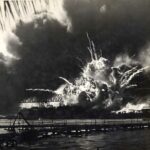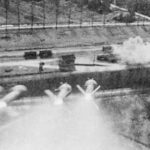Poor Richard’s Report
Over 300,001 readers
My Mission: God has uniquely designed me to seek, write, and speak the truth as I see it. Preservation of one’s wealth while providing needful income is my primary goal in these unsettled times. I have given the ability to evaluate study, and interpret world and national events and their influence on future of the financial markets. This gift allows me to meet the needs of individual and institution clients. I evaluate situations first on a fundamental basis then try to confirm on a technical basis. In the past it has been fairly successful.
This is a classic letter. Please read it. Cheerio !!!!
From:
This sender is DomainKeys verified
“John Mauldin”
Add sender to Contacts
To:
rdegraff@yahoo.com
This message was sent to rdegraff@yahoo.com.
Send to a Friend | Print Article | View as PDF | Permissions/Reprints
Thoughts from the Frontline Weekly Newsletter
An Uncomfortable Choice
by John Mauldin
August 28, 2009
In this issue:
An Uncomfortable Choice
What Were We Thinking?
Frugality is the New Normal
And Then We Face the Real Problem
The Teenagers Are in Control
Choose Wisely
Argentina, Brazil, Uruguay, New Orleans, Detroit, and More
We have arrived at this particular economic moment in time by the choices we have made, which now leave us with choices in our future that will be neither easy, convenient, nor comfortable. Sometimes there are just no good choices, only less-bad ones. In this week’s letter we look at what some of those choices might be, and ponder their possible consequences. Are we headed for a double-dip recession? Read on.
An Important Announcement
But first, I want to make a very important announcement. There are not many times in a career when you can say that something new has been created in the financial services industry and that you have been a part of it. But now I can say that and, I must admit, with a little pride in helping to bring a new creation into the world.
For years, Steve Blumenthal and I have shared a passion for bringing Absolute Return Strategies to all investors, not just the wealthy and institutional investors.
I want to introduce you to a new mutual fund, one that is different than the typical long-only equity mutual fund. My friends and partners at CMG have created a mutual fund that is comprised of 9 different trading strategies, a “fund of trading strategies,” so to speak; and it’s one that I believe will be strategically suitable for the economic environment that I think we face. And, as a mutual fund, it is open to all investors.
You can learn more about it by reading a report I have prepared, entitled “How to Deal with Volatility in Extraordinary Markets – Introducing the CMG Absolute Return Strategies Fund.” Simply click here.
If you are an investment advisor or broker, you especially should read about this new fund and contact CMG directly for more information and reports. Full disclosure: as a consultant to the Advisor to the fund, my investment advisory firm does participate in the fees. And be sure and read all the disclosures and risk factors in the document.
And now, let’s look at the choices we face.
An Uncomfortable Choice
As our family grew, we limited the choices our seven kids could make; but as they grew into teenagers, they were given more leeway. Not all of their choices were good. How many times did Dad say, “What were you thinking?” and get a mute reply or a mumbled “I don’t know.”
Yet how else do you teach them that bad choices have bad consequences? You can lecture, you can be a role model; but in the end you have to let them make their own choices. And a lot of them make a lot of bad choices. After having raised six, with one more teenage son at home, I have come to the conclusion that you just breathe a sigh of relief if they grow up and have avoided fatal, life-altering choices. I am lucky. So far. Knock on a lot of wood.
I have watched good kids from good families make bad choices, and kids with no seeming chance make good choices. But one thing I have observed. Very few teenagers make the hard choice without some outside encouragement or help in understanding the known consequences, from some source. They nearly always opt for the choice that involves the most fun and/or the least immediate pain, and then learn later that they now have to make yet another choice as a consequence of the original one. And thus they grow up. So quickly.
But it’s not just teenagers. I am completely capable of making very bad choices as I approach the end of my sixth decade of human experiences and observations. In fact, I have made some rather distressing choices over time. Even in areas where I think I have some expertise I can make appallingly bad choices. Or maybe particularly in those areas, because I have delusions of actually knowing something. In my experience, it takes an expert with a powerful computer to truly foul things up.
Of course, sometimes I get it right. Even I learn, with enough pain. And sometimes I just get lucky. (Although, as my less-than-sainted Dad repeatedly intoned, “The harder I work the luckier I get.”)
Each morning is a new day, but it is a new day impacted by all the choices of the previous days and years. Tiffani and I have literally interviewed in depth well over a hundred millionaires, and talked anecdotally with hundreds over the years. I am struck by how their lives, and those of their families, come down to a few choices. Sometimes good choices and sometimes lucky choices. Often, difficult ones. But very few were the easy choice.
What Were We Thinking?
As a culture, the current mix of generations, especially in the US, has made some choices. Choices which, in hindsight, leave the adult in us asking, “What were we thinking?”
In a way, we were like teenagers. We made the easy choice, not thinking of the consequences. We never absorbed the lessons of the Depression from our grandparents. We quickly forgot the sobering malaise of the ’70s as the bull market of the ’80s and ’90s gave us the illusion of wealth and an easy future. Even the crash of Black Friday seemed a mere bump on the path to success, passing so quickly. And as interest rates came down and money became easier, our propensity to acquire things took over.
And then something really bad happened. Our homes started to rise in value and we learned through new methods of financial engineering that we could borrow against what seemed like their ever-rising value, to finance consumption today.
We became Blimpie from the Popeye cartoons of our youth: “I will gladly repay you Tuesday for a hamburger today.”
Not for us the lay-away programs of our parents, patiently paying something each week or month until the desired object could be taken home. Come to think of it, I am not sure if my kids (15 through 32) have ever even heard of a lay-away program, not with credit cards so easy to obtain. Next family brunch, I will explain this quaint concept. (Interestingly, I heard about a revival of the concept on CNBC radio, coming back from dropping Trey off at school this morning. Everything old is new again.)
As a banking system, we made choices. We created all sorts of readily available credit, and packaged it in convenient, irresistible AAA-rated securities and sold them to a gullible world. We created liar loans, no-money-down loans, and no-documentation loans and expected them to act the same way that mortgages had in the past. What were the rating agencies thinking? Where were the adults supervising the sand box?
(Oh, wait a minute. DThat’s the same group of regulators who now want more power and money.)
It is not as if all this was done in some back alley by seedy-looking characters. This was done on TV and in books and advertisements. I remember the first time I saw an ad telling me to call this number to borrow up to 125% of the value of my home, and wondering how this could be a good idea.
Turns out it can be a great idea for the salesmen, if they can package those loans into securities and sell them to foreigners, with everyone making large commissions on the way. The choice was to make a lot of money with no downside consequences to yourself. What teenager could say no?
Greenspan keeping rates low aided and abetted that process. Starting two wars and pushing through a massive health-care package, along with no spending control from the Republican Party, ran up the fiscal deficits.
Allowing credit default swaps to trade without an exchange or regulations. A culture that viscerally believed that the McMansions they were buying were an investment and not really debt. Yes, we were adolescents at the party to end all parties.
Not to mention an investment industry that tells their clients that stocks earn 8% a year real returns (the report I mentioned at the beginning goes into detail about this). Even as stocks have gone nowhere for ten years, we largely believe (or at least hope) that the latest trend is just the beginning of the next bull market.
It was not that there were no warnings. There were many, including from your humble analyst, who wrote about the coming train wreck that we are now trying to clean up. But those warnings were ignored.
Actually, ignored is a nice way to put it. Derision. Scorn. Laughter. And worse, dismissal as a non-serious perpetual perma-bear. My corner of the investment-writing world takes a very thick skin.
The good times had lasted so long, how could the trend not be correct? It is human nature to believe the current trend, especially a favorable one that helps us, will continue forever.
And just like a teenager who doesn’t think about the consequences of the current fun, we paid no attention. We hadn’t experienced the hard lessons of our elders, who learned them in the depths of the Depression. This time it was different. We were smarter and wouldn’t make those mistakes. Didn’t we have the research of Bernanke and others, telling us what to avoid?
In millions of different ways, we all partied on. It wasn’t exclusively a liberal or a conservative, a rich or apoor, a male or a female addiction. We all borrowed and spent. We did it as individuals, and we did it as cities and states and countries.
We ran up unfunded pension deficits at many local and state funds, to the tune of several trillion dollars and rising. We have a massive, tens of trillions of dollars, bill coming due for Social Security and Medicare, starting in the next 5-7 years, that makes the current crisis pale in comparison. We now seemingly want to add to this by passing even more spending programs that will only make the hole deeper.
Frugality is the New Normal
I could go on and on, but I think you get the point. The time for good choices was a decade ago. It would have been more difficult at the time, so that is not what we did. And now we wake up and are faced with a set of choices, none of them good.
Reality is staring back in the mirror at the American consumer, and especially the Boomer generation. The psyche of the American consumer has been permanently seared. We are watching savings beginning to rise and consumer spending patterns change for the first time in generations. Even as the authorities try to prod consumers back into old habits, they are not responding. Borrowing and credit are actually falling. Banks, for whatever reason, now want borrowers to actually be able to pay them back. Go figure.
Frugality is the new normal. We are resetting the underpinnings of a consumer-driven society to a new level. It will require a major overhaul of our economy. The normal drivers of growth – consumer spending, business investment, and exports – are all weak, and it is only because of massive government spending that the second quarter was not as bad as the two previous quarters and that the coming quarter will be positive.
But what then? How long can we continue with 10%-plus GDP deficits? We have an economy that is in a Statistical Recovery, fueled by government largesse. In the real world, we are watching unemployment rise, and it is likely to do so through the middle of next year. Deflation is in the air. Capacity utilization is near all-time lows. Housing numbers are only bouncing because of the government program of large tax credits for first-time home buyers and lower home prices. It will be years before construction is significant.
We will be faced with a choice this fall and early next year. If you take away the government spending, the potential for falling back into a recession is quite high, given the underlying weakness in the economy. A few hundred billion for increased and extended unemployment benefits will not be enough to stem the tide. There will be a groundswell for yet another stimulus package. Another 10% of GDP deficit is quite likely for next year.
As I (and Woody Brock) have made very clear in these e-letters, deficits that are higher than nominal GDP cannot continue without dire consequences. Good friend Richard Russell writes today:
“The US national debt is now over $11 trillion dollars. The interest on our national debt is now $340 billion. This is about at 3.04% rate of interest. In ten years the Obama administration admits that they will add $9 trillion to the national debt. That would take it to $20 trillion. Let’s say that by some miracle the interest on the national debt in 10 years will still be 3.09%. That would mean that the interest on the national debt would be $618 billion a year or over one billion a day. No nation can hold up in the face of those kinds of expenses. Either the dollar would collapse or interest rates would go through the roof.”
That would be at least 30% of the national budget. How would your household do, paying that much as interest? How can you operate when interest payments are 30% or more of the budget? Do you borrow to pay the interest? And the Obama administration openly admits to deficits of over a trillion a year for the next ten years, under very rosy growth assumptions. Anyone outside of Washington and rosy-eyed economists think we will grow 4% next year? I am not seeing many hands go up.
And Then We Face the Real Problem
If we do not maintain high deficits, it is likely we fall back into recession. Yet if we do not control spending, we risk running up a debt that becomes very difficult to finance by conventional means. Monetizing the debt can only work for a few trillion here or there. At some point, the bond market will simply fall apart. And it could happen quickly. Think back to how fast things fell apart in the summer of 2007. When perception of the potential for inflation changes, it changes things fast.
The problem is that we are now in a very deflationary world. Deleveraging, too much capacity, high and rising unemployment, falling real incomes, and more are all the classic pieces of the formula for deflation.
Let’s look at what my friend Nouriel Roubini recently wrote. I think he hit the nail on the head:
“A combination of higher official indebtedness and monetization has the potential to yield the worst of all worlds, pushing up long-term rates and generating increased inflation expectations before a convincing return to growth takes hold. An early return to higher long-term rates will crowd out private demand, as lending rates on mortgages and personal and corporate loans rise too. It is unlikely that actual inflation will emerge this year or even next, but inflation expectations as reflected in long-term interest rates could well be rising later in 2010. This would represent a serious threat to economic recovery, which is predicated on the idea that the actual borrowing rates that individuals and businesses pay will remain low for an extended period.
“Yet the alternative – the early withdrawal of the stimulus drug that governments have been dispensing so freely – is even more serious. The present administration believes that deflation is a worse threat than inflation. They are right to think that. Trying to rebuild public finances at a deflationary moment – a time when unemployment is rising, and private demand is still contracting – could be catastrophic, turning recovery into renewed recession.”
There are no good choices. Nouriel, optimist that he is (note sarcasm), suggests that there is a possibility that the government can manage expectations by showing a clear path to fiscal responsibility that can be believed. And thus the bond markets do not force rates higher, thereby thwarting recovery.
And technically he is right. If there were adults supervising the party, it might be possible. But there are not. The teenagers are in control. Instead of fiscal discipline, we are hearing increased demands for more spending. Please note that the very rosy future-deficit assumptions assume the end of the Bush tax cuts at the close of 2010. But raising taxes back to the level of 2000 does not make the projected future budget deficits go away.
I mean, seriously, does anyone think Pelosi or Reid are going to lead us to fiscal constraint? Obama talks a good game, but he has not offered a serious deficit-reduction proposal, other than further tax increases. And by serious, I mean we need cuts on the order of several hundred billion dollars. The Republicans lost their way and their power (deservedly, in my opinion). Just as at the high school prom, the very few adults are being ignored.
It is the proverbial rock and the hard place. Cut the stimulus too soon and we slide back into a deeper recession. Let the budget spin out of control for a few years and we will see inflation return, with higher rates and a recession. Raise taxes by 1.5-2% of GDP in 2010 and we are shoved back into recession.
There are no good choices. If we do the right thing and cut the deficit, it means very hard choices. Can we keep our commitments to two wars and our massive defense budget? Medicare and Social Security reform are not painless. Education? Research? The “stimulus”? But cutting the deficit by hundreds of billions while raising taxes by even more than is already in the works, is not the formula for sustainable recovery.
Have we grown up? Are there adults in the room? Sadly, I don’t think there are enough. We are still a nation of teenagers. We will do whatever we can to avoid the pain today. We will kick the can down the road, hoping for a miracle. Will we grow up? Yes, but the lessons learned will be hard.
There are no statistical signs of an impending recession. We are not going to get an inverted yield curve this time, which made it relatively easy for me to predict recessions in 2000 and 2006. We are in a deflationary, deleveraging world. A far different world than in the past.
I see little room for us to avoid a double-dip recession. It would take the skill and speed of former Cowboys running back Tony Dorsett hitting a very small hole in the line to break us into the open. I see no running back in our national leadership with such ability. As I have outlined above, recession could be triggered again in any number of very different economic environments. It all depends on the choices we make. But the choices lead to the same consequences, at least in my opinion.
As I wrote in August 2000 and August 2006, I write again in August 2009: there is a recession in our future. I was early both of those times and I am early now, maybe two years early, though I doubt it. And as I pointed out both of those last times, the stock market drops an average of over 40% during a recession. When I was on Kudlow in October of 2006, I was given a hard time about my recession call and prediction of a bear market. I think it was John Rutherford who dismissed my bearish vision. And he was right for the next three quarters, as the market proceeded to rise another 20%. I looked foolish to many, but I maintained my views.
You have choices. You can buy and hold (buy and hope?) or you can develop a strategic alternative. The next bear market, as I wrote in 2003 and in Bull’s Eye Investing, will likely be the bottom. (It takes at least three of them to really take us to the bottom.) But the next one will change perceptions for a long time. Valuations will drop. Savings will rise even more. And a generation will grow up. The adults will return. Chastened. Scarred. Shaken. But we will Muddle Through. That is what we do. Even my teenagers.
Choose wisely.
Argentina, Brazil, Uruguay, New Orleans, Detroit, and More
Only a month ago my fall schedule looked surprisingly light. And then reality hit. I will be at the Schwab conference in San Diego on September 15. If you are going to be there, drop me a note. That is my only trip in September. But then it gets interesting. I celebrate my 60th birthday the first weekend of October, then fly to New Orleans to be at the annual New Orleans Conference, October 8-11. The speaker line-up is better than ever. I find this to be one of the best conferences I go to very year. I have been attending on and off for over 25 years. You should think about this one.
Then I will spend the next weekend in Detroit, then probably go to New York, then Philadelphia for a CMG conference October 20, then down to Houston, over to Orlando, stop to change clothes and pack at home, and then fly off on a whirlwind trip to Argentina, Brazil, and Uruguay, speaking at a series of CFA conferences. Orlando in mid-November … and nothing else so far. Switzerland and London in January.
I recently did an interview with King World News that was quite frankly one of the best interviews I have ever done. Eric King really got me going. It is in two parts. I give you the link to the first part, and the second is in their archives. There are also interviews with a very serious group of names. I am flattered to be included. Click here.
It is time to hit the send button. I am resisting the temptation to launch into politics, so I need to quit before I do. Suffice it to say, we could see some big changes as we work through our teenage years, back to adulthood.
Speaking of good choices, the wedding last weekend was fabulous. I am delighted with my new son-in-law. Life goes on, even as my kids struggle to get enough hours of work and money. Henry is at UPS, and work hours are way down and they have a new son. Chad finally got a new job, which may give him enough hours to survive, but not a lot of money. For those of you who think I live in an ivory tower, I do have a view into the lives of seven kids who are very real people, as well as those of lots of friends. I am very well aware of how tough it is out there, and realize how blessed I am.
You have a great week. Tomorrow I get to go the Dallas Cowboys game in the new stadium in a suite, courtesy of a friend who got the seats from Jerry Jones himself. Not sure where, but it sounds cool. Sometimes life gives you lucky breaks.
Your amazed to still be writing after all these years analyst,
John Mauldin
John@FrontLineThoughts.com
Copyright 2009 John Mauldin. All Rights Reserved
Note: The generic Accredited Investor E-letters are not an offering for any investment. It represents only the opinions of John Mauldin and Millennium Wave Investments. It is intended solely for accredited investors who have registered with Millennium Wave Investments and Altegris Investments at www.accreditedinvestor.ws or directly related websites and have been so registered for no less than 30 days. The Accredited Investor E-Letter is provided on a confidential basis, and subscribers to the Accredited Investor E-Letter are not to send this letter to anyone other than their professional investment counselors. Investors should discuss any investment with their personal investment counsel. John Mauldin is the President of Millennium Wave Advisors, LLC (MWA), which is an investment advisory firm registered with multiple states. John Mauldin is a registered representative of Millennium Wave Securities, LLC, (MWS), an FINRA registered broker-dealer. MWS is also a Commodity Pool Operator (CPO) and a Commodity Trading Advisor (CTA) registered with the CFTC, as well as an Introducing Broker (IB). Millennium Wave Investments is a dba of MWA LLC and MWS LLC. Millennium Wave Investments cooperates in the consulting on and marketing of private investment offerings with other independent firms such as Altegris Investments; Absolute Return Partners, LLP; and Plexus Asset Management. Funds recommended by Mauldin may pay a portion of their fees to these independent firms, who will share 1/3 of those fees with MWS and thus with Mauldin. Any views expressed herein are provided for information purposes only and should not be construed in any way as an offer, an endorsement, or inducement to invest with any CTA, fund, or program mentioned here or elsewhere. Before seeking any advisor’s services or making an investment in a fund, investors must read and examine thoroughly the respective disclosure document or offering memorandum. Since these firms and Mauldin receive fees from the funds they recommend/market, they only recommend/market products with which they have been able to negotiate fee arrangements.
Send to a Friend | Print Article | View as PDF | Permissions/Reprints
You have permission to publish this article electronically or in print as long as the following is included:
John Mauldin, Best-Selling author and recognized financial expert, is also editor of the free Thoughts From the Frontline that goes to over 1 million readers each week. For more information on John or his FREE weekly economic letter go to: http://www.frontlinethoughts.com/learnmore
To subscribe to John Mauldin’s E-Letter please click here:
http://www.frontlinethoughts.com/subscribe.asp
To change your email address please click here:
http://www.frontlinethoughts.com/change.asp
If you would ALSO like changes applied to the Accredited Investor E- Letter, please include your old and new email address along with a note requesting the change for both e-letters and send your request to wave@frontlinethoughts.com
To unsubscribe please refer to the bottom of the email.
PAST RESULTS ARE NOT INDICATIVE OF FUTURE RESULTS. THERE IS RISK OF LOSS AS WELL AS THE OPPORTUNITY FOR GAIN WHEN INVESTING IN MANAGED FUNDS. WHEN CONSIDERING ALTERNATIVE INVESTMENTS, INCLUDING HEDGE FUNDS, YOU SHOULD CONSIDER VARIOUS RISKS INCLUDING THE FACT THAT SOME PRODUCTS: OFTEN ENGAGE IN LEVERAGING AND OTHER SPECULATIVE INVESTMENT PRACTICES THAT MAY INCREASE THE RISK OF INVESTMENT LOSS, CAN BE ILLIQUID, ARE NOT REQUIRED TO PROVIDE PERIODIC PRICING OR VALUATION INFORMATION TO INVESTORS, MAY INVOLVE COMPLEX TAX STRUCTURES AND DELAYS IN DISTRIBUTING IMPORTANT TAX INFORMATION, ARE NOT SUBJECT TO THE SAME REGULATORY REQUIREMENTS AS MUTUAL FUNDS, OFTEN CHARGE HIGH FEES, AND IN MANY CASES THE UNDERLYING INVESTMENTS ARE NOT TRANSPARENT AND ARE KNOWN ONLY TO THE INVESTMENT MANAGER.
John Mauldin is the President of Millennium Wave Advisors, LLC (MWA) which is an investment advisory firm registered with multiple states. John Mauldin is a registered representative of Millennium Wave Securities, LLC, (MWS) an NASD registered broker-dealer. MWS is also a Commodity Pool Operator (CPO) and a Commodity Trading Advisor (CTA) registered with the CFTC, as well as an Introducing Broker (IB). Millennium Wave Investments is a dba of MWA LLC and MWS LLC. All material presented herein is believed to be reliable but we cannot attest to its accuracy. Investment recommendations may change and readers are urged to check with their investment counselors before making any investment decisions.
Opinions expressed in these reports may change without prior notice. John Mauldin and/or the staffs at Millennium Wave Advisors, LLC may or may not have investments in any funds cited above. John Mauldin can be reached at 800-829-7273.
________________________________________
EASY UNSUBSCRIBE click here:
http://www.frontlinethoughts.com/unsubscribe.asp
Or send an email To: wave@frontlinethoughts.com
This email was sent to rdegraff@yahoo.com
________________________________________
Thoughts from the Frontline
3204 Beverly Drive
Dallas, Texas 75205
Richard C De Graff
256 Ashford Road
RER Eastford Ct 06242
860-522-7171 Main Office
800-821-6665 Watts
860-315-7413 Home/Office
rdegraff@coburnfinancial.com
This report has been prepared from original sources and data which we believe reliable but we make no representation to its accuracy or completeness. Coburn & Meredith Inc. its subsidiaries and or officers may from time to time acquire, hold, sell a position discussed in this publications, and we may act as principal for our own account or as agent for both the buyer and seller.










































